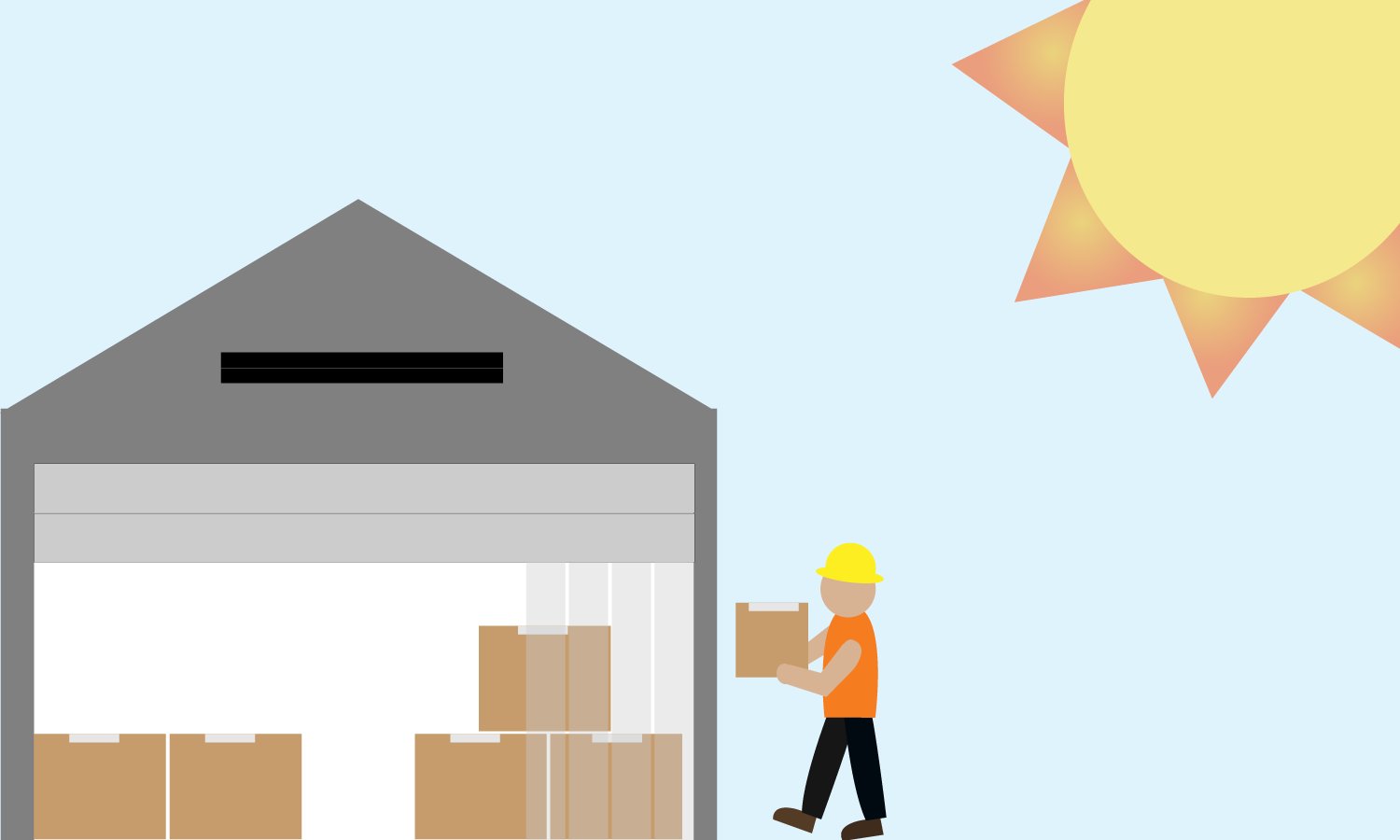After dealing with a long cold winter, it is very important for employers to prepare for the warmer weather. This is because the high heat can cause many problems for a warehouse. Not only can the heat damage or destroy your inventory, it can also be a threat to your employees, your supplies, and your electricity bill. Employers need to know how to keep their employees and operations safe during the extreme heat.
Why Warehouses Are Affected By The Heat
Warehouses are designed in a very simple way. They are not made to protect against the extreme cold or heat. Most people think that weather only affects workers who work outdoors, however it can have a great impact on those who work in a warehouse as well. If you have ever worked in a warehouse, you know what we are talking about.
Trying to beat the heat in the warehouse is not always an easy task. Generally, you are wearing bulky protective clothing, making it very uncomfortable. The sun is constantly beating down on the roof, resulting in temperatures inside climbing higher and higher. Due to the high cost of cooling large, high-ceilinged warehouses, most are not air-conditioned. The heat can also affect your worker’s productivity and can cause fatigue and heat exhaustion. In addition, the heat can lead to damaged stock, which then leads to unsatisfied customers due to inaccurate inventory, or a delay in delivery.
Risks From The Extreme Heat
The heat can cause more than discomfort or a delay in work. The extreme heat can actually cause a lot of damage to equipment/supplies, as well as cause injury to employees. More than just discomfort, excessive heat can be dangerous, affecting the health and safety of workers. Working in extreme heat puts stress on a person’s cooling system. High temperatures and humidity, mixed with physical work, loss of fluids, fatigue, or some medical conditions, can lead to heat exhaustion, heat-related illness, disability, and even death. It is important to understand the symptoms and take the preventative measures against it in order to function effectively in these conditions.
What Can Your Employer Do?
Your employer should implement a heat stress prevention program that includes training about the hazards, health effects, and preventive measures, as well as set criteria for monitoring weather alerts. In addition, employers can ensure that preventative measures are being taken such as increased frequency of breaks, encouraged hydration, reduced work pace and work load, as well as avoiding working in the direct sun. Employers should also be monitoring worker symptoms. Such as, workers may be less alert and could possibly faint. Some signs of heat exhaustion are confusion, reddish skin, fever, weakness, dizziness, vomiting, heavy sweating, and nausea. Some ways to avoid this is to drink lots of water and wear loose fitting, light coloured clothing.
What Can YOU Do?
It is also critical that you are aware of yourself and your own needs.
- Stay Hydrated
Many times we forget to regularly drink water, or do not drink enough of it. It is crucial that we are replacing our fluids and staying hydrate in the extreme heat.
- Work/Rest Cycle
Make sure that you are distributing your workload evenly throughout the day and take extra caution in the heat. When you are working in the extreme heat, or for an extended period of time outside, introduce more rest periods throughout your day.
- Be Alert
You know your body best. Remain alert and look out for signs of heat illness such as heat cramps, heat exhaustion, and heat stroke.
Tips To Consider
The following are some useful tips for avoiding injury, pain, or equipment damage during the extreme heat:
- Install screen doors as a way to increase the airflow in the warehouse, while preventing any birds or bugs from getting in.
- Keep your warehouse cool by installing fans and ensuring that your warehouse is well insulated. This will help to keep all of the cold air in.
- Keep an eye on your cold storage. Some warehouses need to keep products fresh and cool, so you want to watch how often the doors to your cold storage are being opened.
- Examine your warehouse supplies to ensure that you have the right ones to match your environment.
- Maintain proper inventory control. You need to know what you have and how much so that you can take care of it. You do not want to have to replace bundles of damaged inventory.
- Keep doors and gates closed in areas that you want to keep the cold air in. Curtains and strip doors can also be beneficial to keep the cold air from escaping and prevent hot air from coming inside.
- Considering replacing your roof. Some roof materials can get as high as 190 degrees Fahrenheit, which then transfers into the warehouse.
- Finally, keep your employees happy and healthy. No one likes to work in the heat and having happy workers, increases productivity.
If you are taking all of the right precautions, warehouses can be safe and comfortable during the extreme heat!



